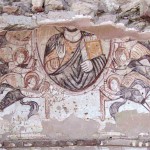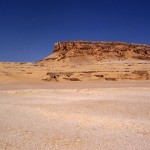
Coptic Heritage in Egypt – Qubbat el-Hawa
There are many important and disappearing sites of the Early Coptic period in Egypt that should at least be considered as world heritage sites. These include Wadi el Natrun in the desert edges of the eastern Delta, the site of an important early Christian monastic tradition, with four functioning monasteries surviving today (and recently put forward to UNESCO for consideration); Kellia, an important monastic site north east of wadi el-Natrun, which demonstrated the ‘bridge’ between the ascetic (lone) monks and the cenobitic (communal). Just as important is the vast Christian cemetery of el Bagawat near the Kharga oasis, with its painted private tomb-chapels, considered to be the oldest and largest Christian cemetery in the world. A few hour’s drive from Luxor it is now an increasingly busy tourist attraction and should certainly be considered for a place on the UNESCO list. [more…]

Early Coptic Church and Monastic Architecture. The Link with the Pharaonic and Greco-Roman Past.
Although the religions of ancient Egypt and Coptic Christianity are fundamentally different, there are a number of parallels and similarities between the internal arrangements and layouts of the Pharaonic temples, and those of the later Coptic churches. Both Ancient Egyptian temples and Coptic churches were places of worship, each containing space designed to incorporate symbolic elements and to allow for the performance of specific activities. They were built according to certain formulaic conventions that dictated how that space should be employed by different levels of the clergy and the public. [more…]

An Introduction to The Coptic Period in Egypt. The Early Christian era 1st Century AD – 7th Century AD
By Howard Middleton-Jones. Published on Egyptological, Magazine Edition 3, December 7th 2011. First in an occasional series about Coptic heritage by Howard Middleton-Jones. Introduction The Middle East is a region of remarkable achievements, captured in literature from the 19th century onwards, often expressed in superlative terms. Readers will be familiar with the ‘Cradle of […] [more…]
 By
By